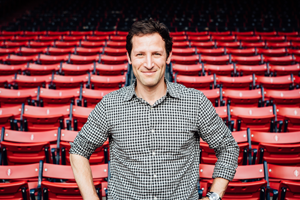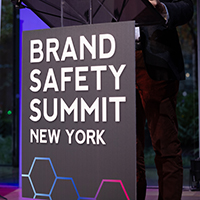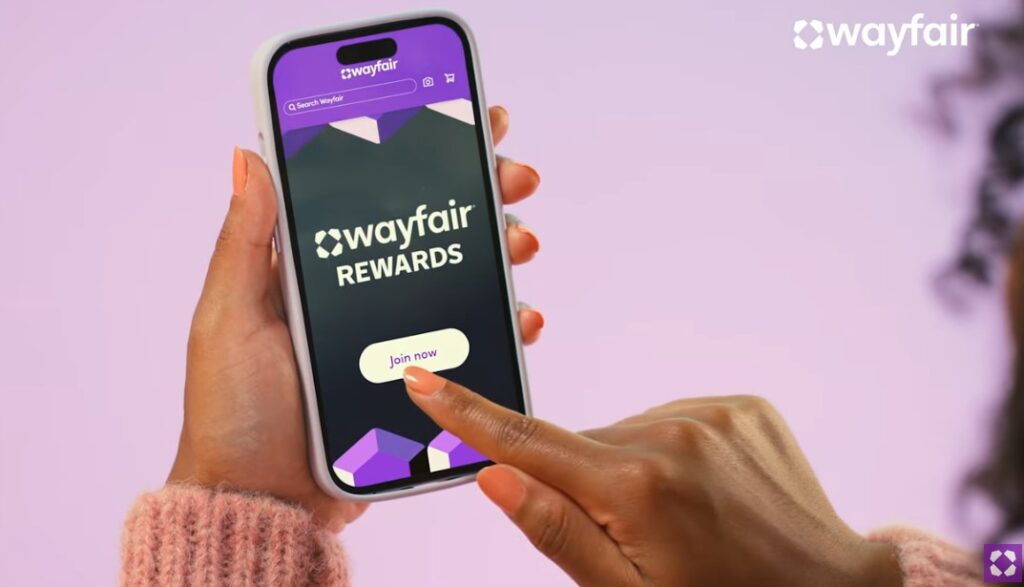Sports continues to play a huge role in marketing, as brands work hard to reach passionate fans with relevant content. Boston Red Sox/Fenway Sports Management CMO Adam Grossman sat down with Chief Marketer to chat about the trends and opportunities in sports marketing. Hear more from Adam in an exclusive fireside chat Friday, Sept. 27 at LeadsCon’s Connect to Convert in Boston.

CHIEF MARKETER: What are some of the trends you see happening in sports marketing?
ADAM GROSSMAN: We’ll see the more widespread use of virtual and augmented reality as a marketing tool. With commercial applications for these technologies coming on-line at a breakneck pace, these are no longer futurist concepts—they are the present. Many marketers are just beginning to explore VR/AR’s potential to bring their products and services to life. But the technologies’ experiential nature offers such a powerful platform for brands to immerse customers in their experience that businesses won’t stay on the sidelines for much longer. Look for SMBs to get in on the act this year and determine creative ways to use this exciting technology to engage their customers and prospects.
CM: Where do you see VR/AR going as a sports marketing tool?
AG: Look for increased adoption of AR/VR in sports—both inside the ballpark and out. We introduced the Red Sox Virtual Reality Dugout, MLB’s first virtual reality experience, at Fenway Park in 2016. Our program provides fans experiential access to behind-the-scenes 360-degree video from the perspective of players including batting box against a virtual pitcher by taking cuts in the batting cage.
Other articles you might enjoy:
- 11 Inventive Ways to Use Augmented Reality
- ROKiT CMO on Launching its Phone with Major Sports Sponsorships
CM: What’s happening this season?
AG: This season we integrated AR into our Fenway Park tour itinerary and employed the technology via several fan engagement initiatives, including a baseball card promotion and a Jackie Bradley Jr. bobblehead promotion where we invited fans to scan a custom code from the side of the bobblehead to unveil a unique, interactive digital experience redeemable through Major League Baseball’s Ballpark app. These initiatives have been very well received by fans, so we’ve enhanced the VR experience in each of the last three seasons and we plan to launch a more comprehensive VR/AR program next season.
CM: Are there any shifting dynamics between sports properties and sponsors?
AG: Brands are demanding honesty from their partner sports properties. The relationship between sport and society mirrors these shifts and this dynamic presents great risk for some sports teams—but a tremendous opportunity for those that tangibly demonstrate their commitment to support the communities in which they operate. Sponsorships offer brands a highly effective way to communicate their purpose and social usefulness to consumers. The teams that are transparent, authentic and care about their fans offer brands the ideal platform to communicate these messages. With consumers now ranking affinity as one of the single most important factors when making purchasing decisions, look for increasing investment in sponsorships.
CM: What challenges do you see looming?
AG: The increasing investments in sponsorships have required us to build a nimble and agile marketing and creative services team that constantly evolves to keep pace with technological innovation and the changing preferences of our fan base. To effectively execute [affinity] campaigns of this nature, our department needs to have the capacity to identify these emerging themes, the capability to produce compelling content that authentically captures their essence, the strategic acumen to integrate the elements into promotional extensions that deliver tangible results and the ability to effectively communicate with audiences through our owned, earned and paid channels in real time.
CM: How about benefits?
AG: While taking this approach creates challenges from a planning perspective and can sometimes impact and/or limit the depth and breadth of creative applications and extensions, the benefits of creating authentic campaigns that emanate from our players and the clubhouse far outweighs the challenges. Even the most compelling content is useless if no one sees it, so as both offline and online worlds become more crowded, it’s critical to have an agile marketing team as well as a well-defined and effective content distribution strategy that ensures the right people see the right content in the right environment.
CM: Are there changes in your fan communication strategies?
AG: Customers expect companies to communicate with them in the ways they desire, and the onus is on us as marketers to define the messages and offers that will resonate with each audience. We employ geotargeting, demographic targeting and interest targeting to ensure we deliver it to them in the right environment.
CM: How does technology factor in?
AG: In order to keep pace with the rapidly changing interests of today’s sports consumer, we’ll continue to invest in tools that track, aggregate and deliver actionable insights on customer behaviors and preferences, enhance our real-time decision making and ultimately help us deliver the best possible fan experience both in and outside the ballpark. Understanding how your customers communicate is vital.
CM: What was your favorite Red Sox marketing campaign last season?
AG: I’m admittedly biased but I continue to be inspired by the creativity, passion and precision my team displayed in executing our #DoDamage playoff initiative. The program embodied our approach and was an effective, yet authentic program that originated with the true character of the clubhouse. We generated good metrics—close to a million posts on Twitter and Instagram, including close to a half-million posts on Twitter alone during Game 5 of the World Series.
CM: How did you execute the program?
AG: The campaign included digital, social and broadcast components, which were accented by surprise and delight and grass roots elements that reached and engaged Red Sox Nation. The campaign featured a five-night wall scape͟ installation featuring projected portraits of players and moments from our record-setting 2018 regular season onto buildings and in public spaces throughout Greater Boston. The series of projections included Mookie Betts’ reaction to his July 12 grand slam against the Toronto Blue Jays, countless post-game Gatorade moments, Brock Holt celebrating with Andrew Benintendi following the left fielder’s walk-off home run on August 6 against the Yankees, and Jackie Bradley Jr.’s athletic catch in centerfield Memorial Day weekend. The wall scape project was inspired by Erik Jacobs and his #standswithimmigrants campaign that included a projection of David Ortiz’s image on the field at Fenway Park.
CM: What did your partners think of the campaign?
AG: The campaign resonated with both our fans and with our corporate partners, several of whom developed creative extensions that expanded its reach and impact. Sam Adams, our official beer partner, created a limited edition #DoDamage New England Double IPA, which sold out at its Boston Brewery taproom in just a few days and Dunkin’ Brands also activated around the campaign.
Hear more from Red Sox CMO Adam Grossman at LeadsCon’s Connect to Convert 2019 in Boston, Sept. 25-27. Join us!
 Network
Network

